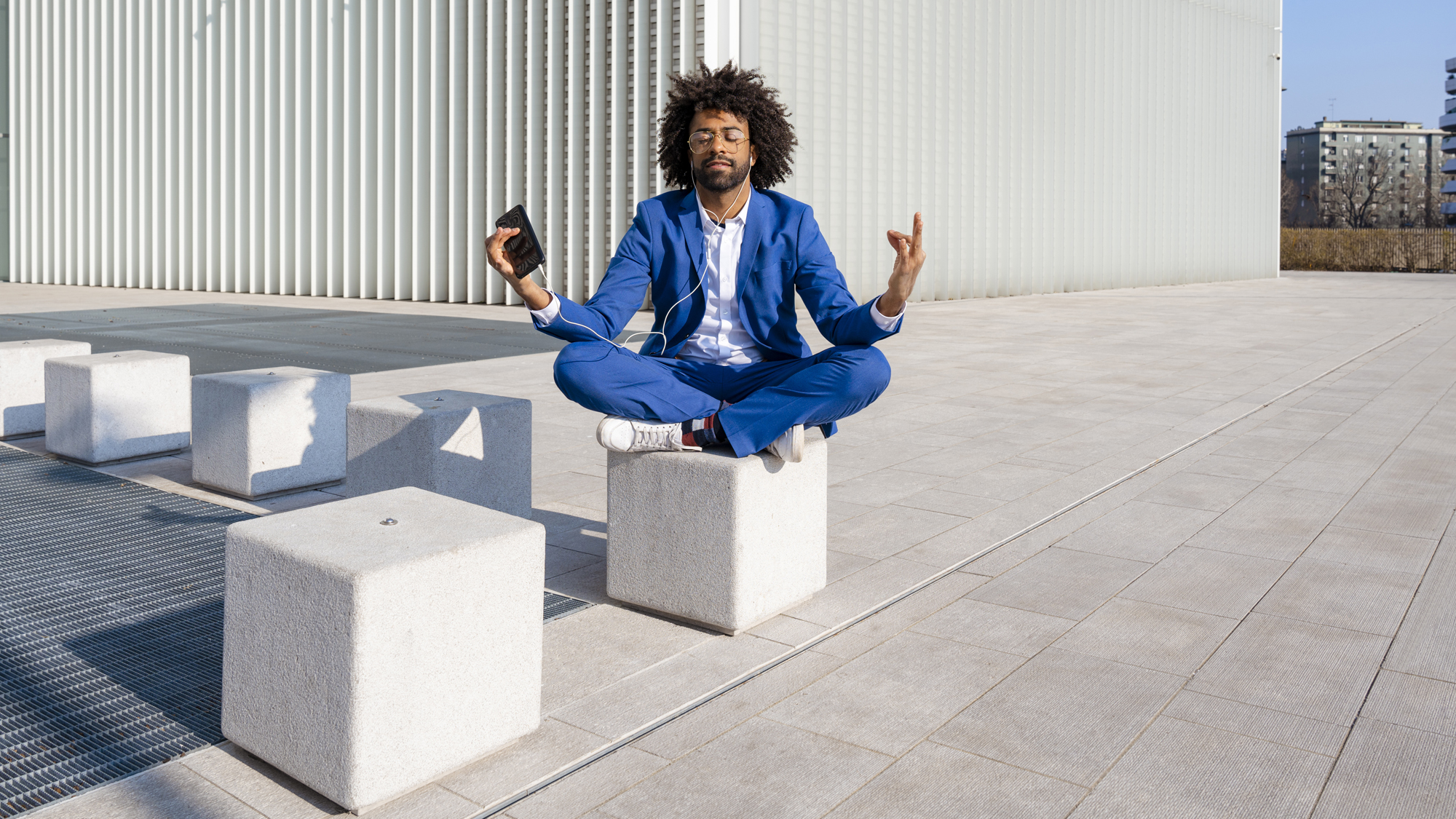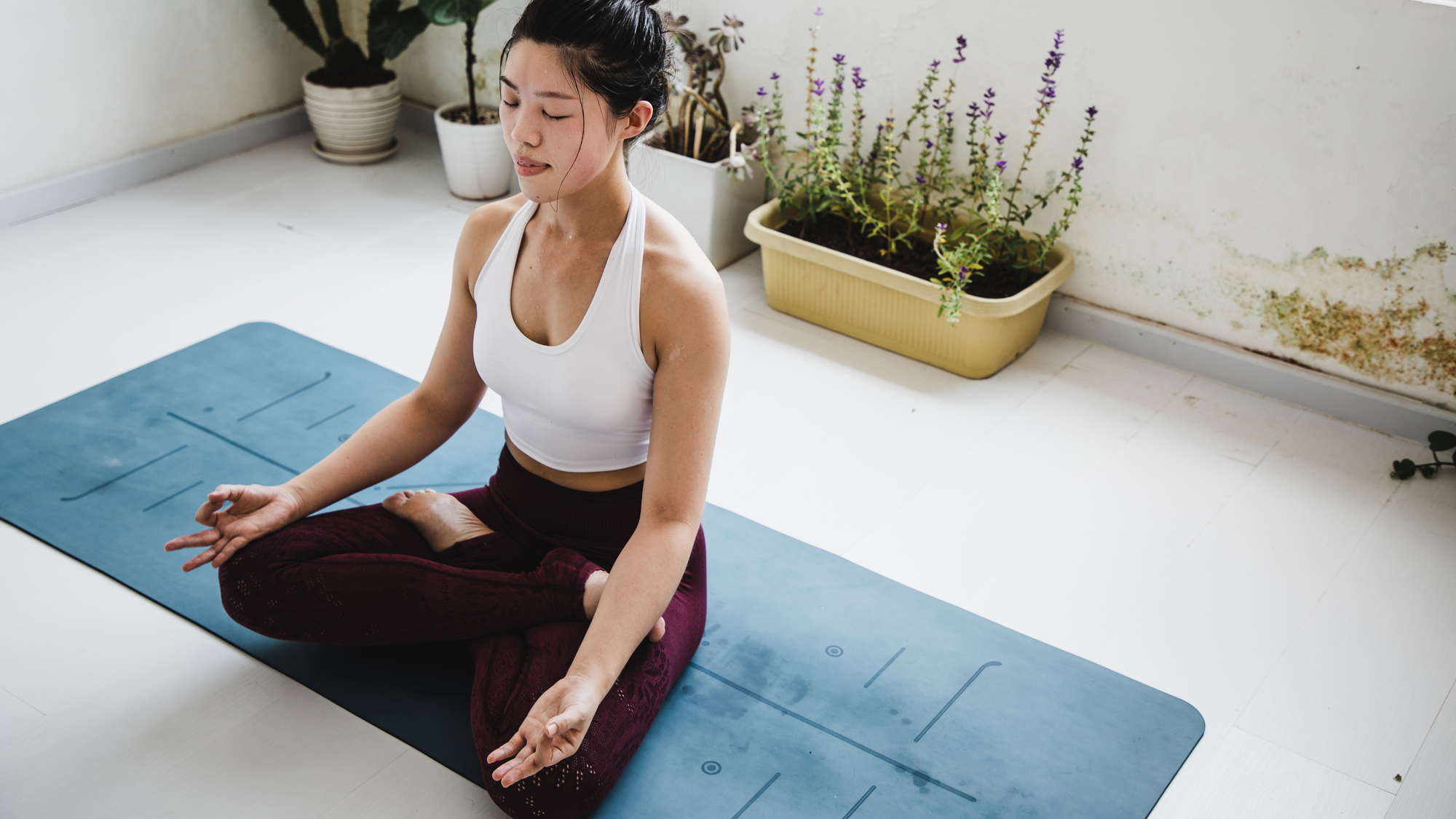Meditation tips for beginners, according to a mindfulness expert
Meditation teacher Eve Lewis Prieto shares her top meditation tips for beginners


With these meditation tips for beginners, you can overcome common challenges and use mindfulness meditation to look after your mind and body. You don't need equipment, so you can take a seat, close your eyes, and spend a few moments focused on your breath, body, and mind.
If you've been learning how to meditate, there's a good chance that you'll have noticed something during a session and wondered how to approach it while you're meditating. Sleepiness, itches, and distractions are common but can feel jarring when sitting in silence.
Many people give meditation a try, can't clear their minds, and feel that maybe meditation isn't for them. Others notice difficult thoughts or emotions rising to the surface, and this discomfort makes it hard to meditate again.
But with some guidance, you can navigate these challenges, build on your mindfulness practice, and bring a sense of ease to your mind. We spoke to Eve Lewis Prieto, Direction of Meditation at Headspace, to find the best meditation tips for beginners to get you started.

Eve is Director of Meditation and a certified mindfulness teacher who has been with Headspace since 2013. She regularly leads live meditation sessions and is passionate about teaching people the benefits of meditation and mindfulness, specifically around stress reduction, resilience and self compassion.
1. You don't need to clear your mind
This is probably one of the biggest misconceptions when it comes to meditation; this sense that to be a good meditator, you have to stop thinking and clear the mind. Actually, in meditation, we're learning to gain a deeper understanding of how our thoughts, emotions, feelings, and behaviors can impact us.
Trying to empty the mind or stop thinking is pretty impossible because all that ends up happening is you start thinking about not thinking and then get frustrated. It can actually add to the restlessness in the mind. I live in LA, where the traffic is terrible, and this image can be quite helpful because everyone can identify with sitting in traffic.
It can be frustrating. It can be annoying. You want to get past people. And that's a little bit like the relationship we have with our thoughts. We like some, we want to get more involved in some, some feel difficult; same with our emotions, same with our feelings. So rather than rushing into the traffic and trying to stop or push away or run away, it's actually about stepping back and observing.
Start your week with achievable workout ideas, health tips and wellbeing advice in your inbox.
The actual skill of mindfulness is noticing that you are distracted and noticing that you're caught up by a strong emotion. So if the mind is really busy one day, there's just a lot of thinking today. If [you] can just step back, take a deep breath, and pause for a moment, even just for a few seconds, that could actually impact how [you] move forward.
For anyone who struggles with a busy mind, you're not alone—I have been meditating for many, many years, and I still struggle with a busy mind some days. Even if you have to bring the mind back every second, that's a moment of awareness. You're noticing that you're distracted. You're coming back.
2. Sit comfortably

The classic Lotus position stems from these ancient practices that have been around for thousands of years when monks and nuns practiced meditation for hours a day. That posture prevents you from falling over [if you fall asleep].
It's not actually designed to be [a position of] relaxation. So it's about what's most comfortable and what you prefer. The most important thing is showing up; if you want to sit in a chair, great. If you want to lie down, great. Do you want to sit on a meditation cushion? Great.
One thing to say about sitting on a cushion or a small meditation bench is it's important to have your hips above your knees because otherwise, you can start to slouch, and it puts pressure on your lower back.
3. Recognize difficult thoughts
You're definitely going to experience difficult emotions or difficult feelings [at times]. If you go to a therapy session, the therapist will want to investigate what's causing you to be stressed, anxious, depressed, whatever it is. And so there is that inquiry, that insight, that is also part of the meditation practice.
If something's feeling very overwhelming and you're really struggling, you can open your eyes. If you have them closed, you can just let go of that. If you're [using] a guided session, maybe have a sip of water, connect with your physical surroundings and notice that you're sitting down, you're in a room, and you're okay.
And maybe just naming what [you're feeling], like 'I see you, anxiety. I feel you, anxiety.' And of course, if it becomes too much, I would just say stop. In extreme circumstances where there may be a very intense mental health issue happening, definitely speak with a healthcare provider.
We're going to feel a multitude of emotions—some pleasant, some very unpleasant—and the relationship between our thoughts and our emotions is obviously very connected. I think it can be very easy to cast blame, shame, criticism, and judgment for feeling the way that we feel. So as much as possible, [try] to be kind to yourself; there's a reason you're feeling the way you are.
If we're feeling, say, anger, we have thoughts about what's making us angry, and that will only continue to fuel the anger. So I see mindfulness meditation as that space, that pause, that can actually say hang on a moment. It also helps us gain a greater understanding of why we're feeling that way.
4. Adjust your posture to combat sleepiness

You don't have to close your eyes during meditation, but most people do because there can be other distractions around you. When the body stops, you close your eyes, you pause, and the body goes, 'oh, I know what to do here, sleep.' So it's super, super common that sleepiness happens, and it has been happening for thousands of years.
There are some things you can try. Posture is one of them. If you like to lay down to meditate because life is busy and [you] don't often get a chance to pause in that way, there is probably a higher chance that you might fall asleep because you'll be resting. And there's a soothing voice, [which makes your] eyes drop.
So if that starts to happen, and your head is nodding, you can move, open your eyes, and maybe sip water. Depending on the weather, crack open a window [and] get some fresh air coming in. If it keeps happening, try meditating with your eyes open, but don't actively engage all of your surroundings, and have a more wakeful posture and sitting in a chair in a nice bright room.
5. It's okay if you get distracted
If something is causing us discomfort, we want it to stop. Or if we like something, we want more of it; we want to hold onto it. One of my teachers described this as riding the wave of crave. She said to see if you can just sit with it—if it becomes so distracting, itch or move. But the reason for doing that is it can start to help us in [any] situation.
Say you're in a difficult conversation or dealing with something that may require you to stay in that situation. You can't just run away from it. So flexing that muscle and riding the wave of crave, so to speak, can be a really beneficial exercise because life isn't always comfortable. But if it becomes so utterly distracting that it's really taking you away from the practice, of course, do what you need.
The same applies if you start to experience a lot of pain and discomfort. That's why sitting in a chair to start with can be helpful because we're used to sitting in a chair. Some folks will meditate using a cushion or a bench, but sitting in a posture that you're not used to can mean that you experienced conflict. So again, move your posture if you need to.
I hear from parents all the time—'in the mornings, I can't meditate, I'm getting the kids ready for school.' Maybe try 15 minutes before bed and carve out that time, instead. That is your time. Life doesn't always happen as expected, so we can practice with the smaller things that don't go according to plan—realign, reassess, and move forward. This is probably the biggest lesson I've learned through my practice and training.
Watch Headspace's 10-minute self-love meditation
If you want to put these meditation tips for beginners into practice, you can press play on Headspace's 10-minute meditation for self-love, a guided meditation session focused on being kind to yourself.
The theme tying together Eve's meditation tips for beginners is acceptance. Your mind won't always feel ready to meditate, your body might want you to sleep, or people around you may make it hard to focus; this is okay and doesn't mean that you're having a bad session.
Many guided sessions last around 10 minutes, but you can ease yourself into meditation with a quick breathing exercise. If you have a spare minute or two, take a comfortable seat, close your eyes, and place your attention on your breath.
As you don't need any special equipment, meditation is one of the top low-cost self care ideas that can boost your wellbeing and protect your mind. If you want to add some mindful movement to your day, roll out one of the best yoga mats and give these 15-minute yoga routines a try.

James is a London-based journalist and Fitness Editor at Fit&Well. He has over five years experience in fitness tech, including time spent as the Buyer’s Guide Editor and Staff Writer at technology publication MakeUseOf. In 2014 he was diagnosed with a chronic health condition, which spurred his interest in health, fitness, and lifestyle management.
In the years since, he has become a devoted meditator, experimented with workout styles and exercises, and used various gadgets to monitor his health. In recent times, James has been absorbed by the intersection between mental health, fitness, sustainability, and environmentalism. When not concerning himself with health and technology, James can be found excitedly checking out each week’s New Music Friday releases.